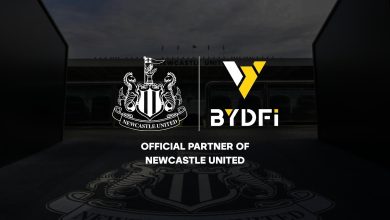A Complete Review and Buyer’s Guide for b07m8nlc37

In the fast-paced world of home networking and digital connectivity, finding the right equipment can be a challenge. If you’ve come across the product code b07m8nlc37, you’re likely looking for a reliable router that delivers high performance, ease of use, and value for money. This guide is dedicated entirely to exploring b07m8nlc37, breaking down its features, performance, benefits, and everything else you need to know before making a purchase.
What is b07m8nlc37?
The term b07m8nlc37 is an Amazon Standard Identification Number (ASIN), a unique product identifier used to search for specific items. In this case, b07m8nlc37 refers to the TP-Link AC1750 Smart WiFi Router (Archer A7). This device is one of the most popular routers on the market, known for its excellent performance, budget-friendly pricing, and strong user reviews.
Whether you’re working from home, streaming content, or gaming online, b07m8nlc37 provides a strong wireless network solution without overwhelming you with technical complexities or high costs.
Key Features of b07m8nlc37
The TP-Link Archer A7, identified by b07m8nlc37, is packed with features that make it a solid choice for most households and small offices. Here’s a closer look at what it offers:
Dual-Band WiFi
One of the standout features of b07m8nlc37 is its dual-band capability. It supports both the 2.4GHz and 5GHz frequencies, allowing users to connect devices based on their bandwidth requirements. The 2.4GHz band offers broader coverage for everyday tasks, while the 5GHz band delivers faster speeds for streaming and gaming.
AC1750 Speed Performance
The “AC1750” in the name refers to the router’s combined speed—up to 450 Mbps on 2.4GHz and 1300 Mbps on 5GHz. This means that b07m8nlc37 is capable of handling HD video streaming, online gaming, and heavy internet usage with minimal lag or buffering.
Easy Setup with TP-Link Tether App
The TP-Link Tether App, available for both Android and iOS devices, makes setting up b07m8nlc37 incredibly simple. Users can manage network settings, monitor internet usage, and control parental restrictions right from their smartphones.
Alexa Compatibility
b07m8nlc37 is compatible with Amazon Alexa. This means you can use voice commands to manage your WiFi network—turn it on or off, prioritize devices, and more—adding an extra layer of convenience to your smart home setup.
Strong Coverage with External Antennas
The router comes with three external antennas that help extend coverage across your home. Whether you’re on a different floor or in a corner room, b07m8nlc37 offers a stable signal with fewer dead zones.
Gigabit Ethernet Ports
In addition to excellent wireless connectivity, b07m8nlc37 also includes four Gigabit Ethernet ports. These allow you to connect wired devices such as desktop computers, gaming consoles, or smart TVs for maximum speed and stability.
Technical Specifications of b07m8nlc37
Understanding the technical aspects of a product like b07m8nlc37 can help you make a more informed buying decision. Here are the key specifications:
-
WiFi Standard: IEEE 802.11ac/n/a 5GHz, IEEE 802.11b/g/n 2.4GHz
-
Speed: Up to 450 Mbps (2.4GHz) and 1300 Mbps (5GHz)
-
Ports: 4x Gigabit LAN, 1x Gigabit WAN
-
Antennas: 3 external antennas
-
Processor: Qualcomm chipset for stable performance
-
App Control: TP-Link Tether App
-
Security Protocols: WPA/WPA2 encryption, SPI firewall
-
Dimensions: 9.6 x 6.4 x 1.3 inches
-
Weight: 0.93 lbs
Who is b07m8nlc37 Ideal For?
The b07m8nlc37 router is ideal for a variety of users. Here’s who can benefit most from using this device:
Home Users
For families and individuals, b07m8nlc37 provides enough power and range to cover a typical household. It supports multiple devices at once, ensuring everyone can stream, browse, or game without interference.
Remote Workers
With the increase in remote work, a reliable internet connection is more important than ever. b07m8nlc37 provides the speed and consistency required for video calls, file transfers, and VPN use.
Gamers
While it’s not a dedicated gaming router, b07m8nlc37 handles online gaming well, especially on the 5GHz band. Its low latency and fast speeds make it a good choice for casual and moderate gamers.
Students and Renters
Affordable and easy to set up, b07m8nlc37 is perfect for students living in dorms or renters in apartments. It offers powerful performance without requiring a technician or a lot of technical knowledge.
Benefits of Using b07m8nlc37
The popularity of b07m8nlc37 isn’t just due to marketing—it’s backed by real-world performance and user satisfaction. Here are some of the main benefits:
-
Affordability: Offers high-end features at a budget-friendly price point.
-
Reliability: Stable and consistent performance across a range of devices.
-
Versatility: Suitable for homes, offices, and small businesses.
-
Security: Advanced WPA/WPA2 protocols and guest network options.
-
Convenience: Easy management through a mobile app and voice control.
Real User Reviews of b07m8nlc37
Customer feedback is an essential part of evaluating any product. Here’s a summary of what users say about b07m8nlc37:
Positive Reviews
-
“I bought b07m8nlc37 over a year ago, and it’s been flawless. Great speeds, stable connection.”
-
“The app makes setup incredibly easy. Even my parents could install it without help.”
-
“I stream 4K Netflix and game online simultaneously with no issues.”
Constructive Criticism
-
“It lacks USB 3.0 ports for network storage.”
-
“Coverage is good but may require a range extender for larger homes.”
Overall, the vast majority of users rate b07m8nlc37 highly for its combination of performance, features, and value.
How to Set Up b07m8nlc37
Setting up b07m8nlc37 is simple and can be done in just a few steps:
-
Unbox the router and connect it to your modem using the provided Ethernet cable.
-
Plug in the power adapter and turn on the device.
-
Download the TP-Link Tether App from the App Store or Google Play.
-
Connect to the router’s default WiFi network (listed on a label on the device).
-
Launch the app and follow the setup instructions.
-
Customize your network name and password, set up parental controls, and you’re good to go.
Comparison with Competing Models
If you’re unsure whether b07m8nlc37 is right for you, here’s how it compares to similar routers:
| Feature | b07m8nlc37 (TP-Link A7) | Netgear R6700 | ASUS RT-AC66U |
|---|---|---|---|
| Speed | AC1750 | AC1750 | AC1750 |
| Price | Budget-Friendly | Mid-range | Higher |
| App Control | Yes | Yes | Yes |
| Alexa Support | Yes | No | No |
| USB Port | 1x USB 2.0 | 1x USB 3.0 | 2x USB |
As seen in the table, b07m8nlc37 stands out with its Alexa support and affordability, though some competitors offer faster USB ports for media sharing.
Read also: The Rise of cosjfxhr in the Digital Era
Final Verdict on b07m8nlc37
To conclude, b07m8nlc37 (TP-Link Archer A7) is one of the best-value routers available in its category. It offers a perfect blend of speed, range, reliability, and smart features. For under $100, you’re getting dual-band performance, voice assistant compatibility, strong parental controls, and easy setup with a mobile app.
Whether you’re a student, parent, gamer, or professional, b07m8nlc37 is a smart investment in your home network.
If you’re on the lookout for a router that doesn’t break the bank yet delivers consistently great performance, b07m8nlc37 should be high on your list.



